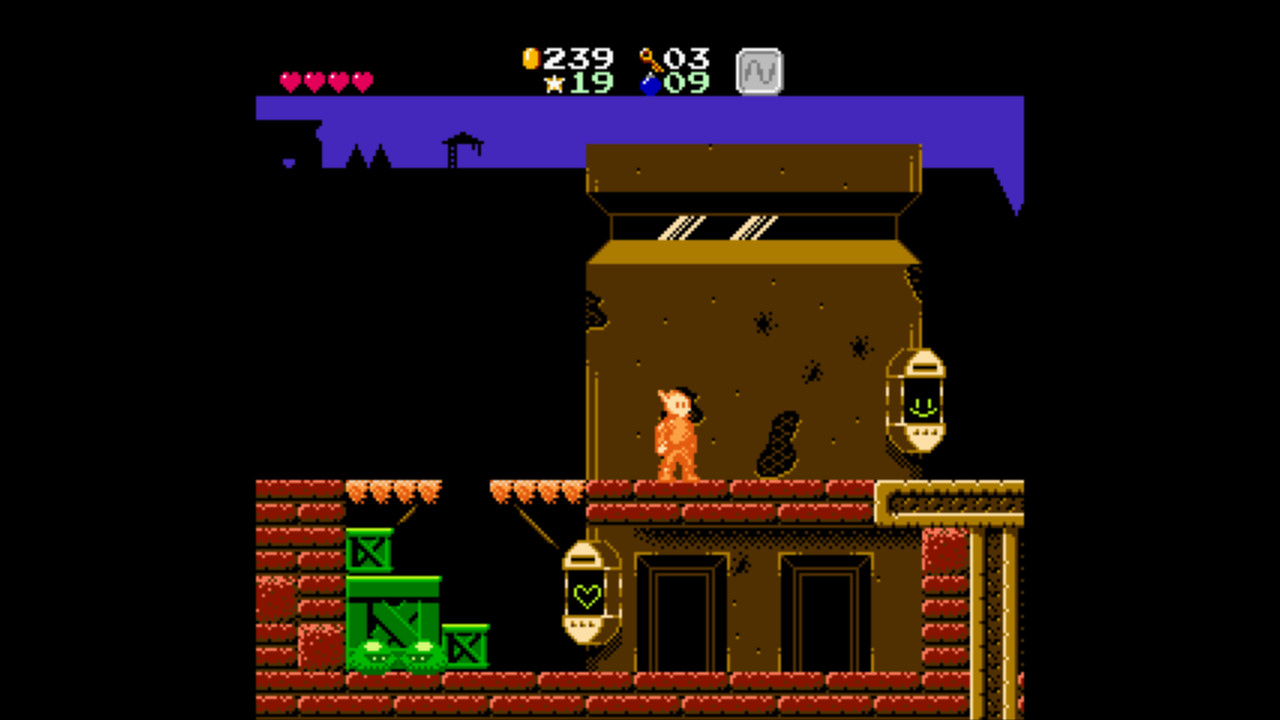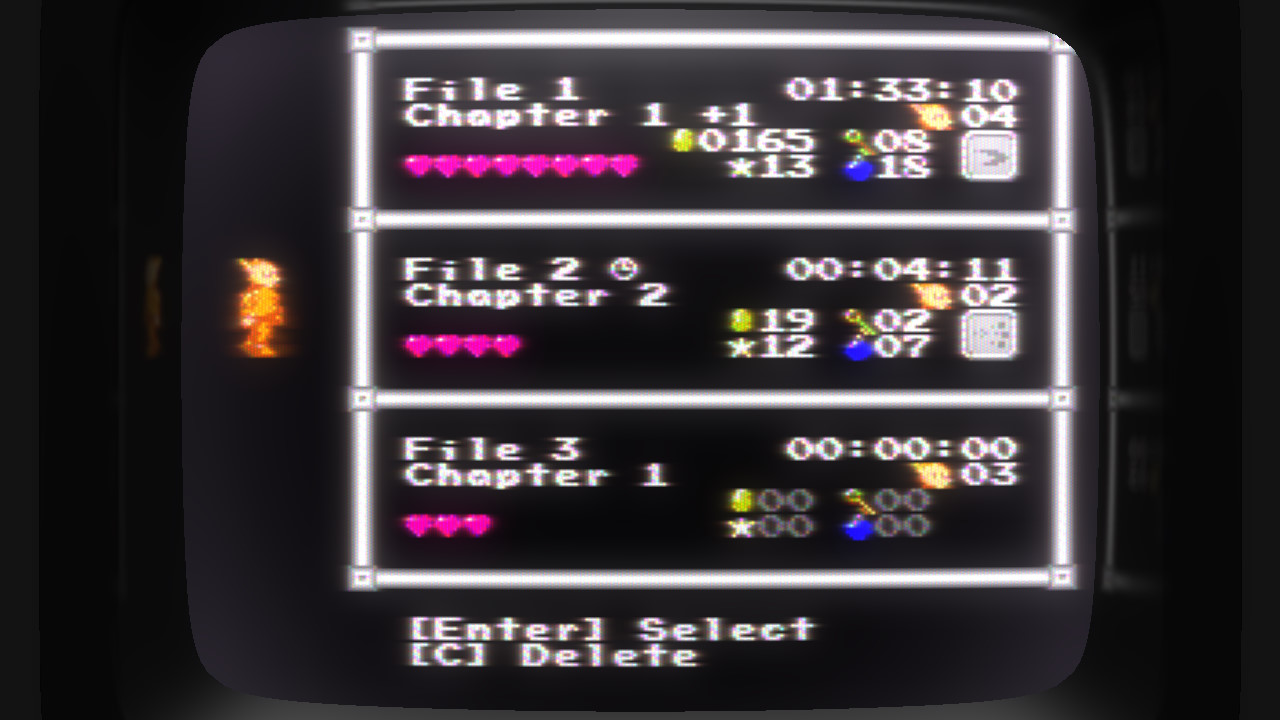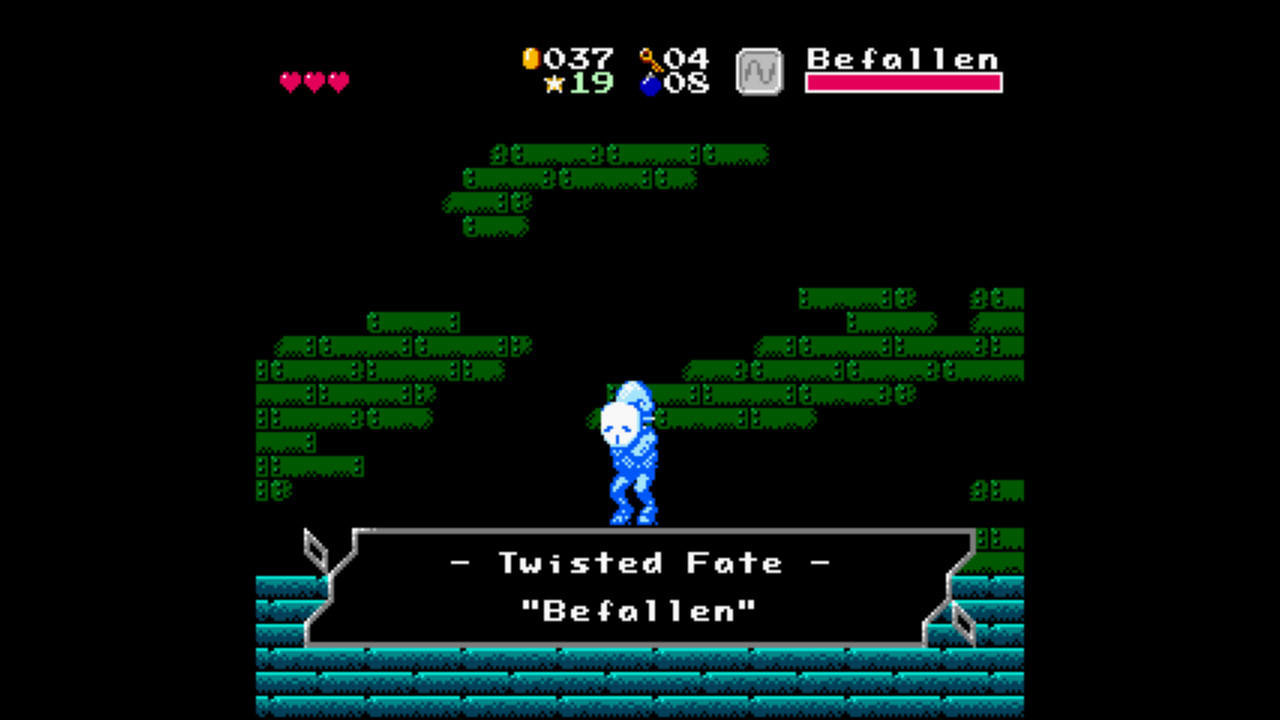Official Site || Steam Page || itch.io Page
Gunmetal Arcadia Zero may primarily serve as a sort of warmup for the larger and more ambition Gunmetal Arcadia, which is currently still in development, but that definitely doesn’t mean that it should be passed up. With dozens of secrets, an impressive array of weapons, subweapons, and upgrades to choose between, and some solid action platformer gameplay, Gunmetal Arcadia Zero has plenty to offer in its own right.
One of the first things I noticed about this game was that the aesthetics reminded me of both Faxanadu and Zelda II: The Adventure of Link and the similarities do indeed go beyond mere aesthetics, though this game is far from being a clone of either. Taking on the role of a ‘tech elf’ named Vireo, players must help in the fight against a horde of mysterious monsters known as the Unmade Empire. Though the game is broken up into six stages, the game’s world feels seamlessly interconnected as Vireo fights his way through the city and into the forest and beyond.There are also plenty of action RPG elements here, but the one overarching feature which nearly everything else ties in with is shopping.

Yes, shopping is everything in the world of Gunmetal Arcadia Zero and, unless you are performing a speedrun, you’ll be seeking out shops for all sorts of things. While the standard attack is a straight thrust for every weapon, attack speeds, damage, and weapon sizes vary significantly and the only way to obtain most weapons, including stronger versions of the default sword, is through shopping. Permanent, rather valuable passive upgrade items are also found in various shops throughout the game and they grant abilities such as allowing Vireo to stab upwards and downwards or to jump higher than usual. Though both bombs for opening up hidden paths and stars for using subweapons can be found by killing enemies or by destroying various objects in the environment, they can be purchased in bulk in many of the stores along with valuable keys for opening locked doors and containers to permanently upgrade storage capacities.
This may sound like a fairly ordinary video game shopping experience, but there are a few important twists. First, while gold can be found in small quantities from enemies and other sources, the main source of income comes in the form of gems which can be cashed in for a modest amount of gold at ordinary shops or for significantly more gold at the rare and often hidden jeweler’s shops. The answer isn’t as simple as always waiting to sell gems for the highest price though because some weapons only show up once or very rarely and refusing to buy a passive upgrade early on may resulting in not being able to access a valuable secret. Lastly, the two factions to choose between affect the prices of various items and NPC shopkeepers belonging to either faction will react different if you are allied with them, so the equipment a player can realistically have at any point in the game, and therefore how they actually deal with the various enemies and obstacles, can greatly change depending upon one’s faction.

Combat is on the simplistic side of things, but there is plenty of variety to the enemies and locations. In addition to his basic stab (and the upward and downward aerial attacks granted by an early and inexpensive passive item) Vireo is capable of lobbing bombs which can hurt enemies in addition to destroying certain walls and star-consuming subweapons can be found by destroying containers in the environment, though only one subweapon can be held at a time. Every stage introduces new enemies which, on top of having some wonderfully strange designs, are generally positioned where their attacks can be used effectively. Later stages also introduce neutral creatures which are normally peaceful, but can become very dangerous if they are accidentally attacked. Though every stage generally progresses from left to right, the actual shape of the path through the game is far from straight. Vertical platforming sections, both upward and downward, are plentiful and secret paths which serve as shortcuts or which lead to rare shops or valuable treasure are all over the place. Doors are also found in even the most unusual of locations and can lead to rooms where the player is not allowed to leave before killing every enemy (which also comes with the benefit of spawning a treasure chest) or to shops and inns or just simply an NPC or two with something to say.

Gunmetal Arcadia Zero isn’t without its flaws and two issues in particular somewhat mar the experience. First, this game can’t entirely escape its position as a prequel to a larger upcoming game. While the setting itself is interesting, the plot within the game does little beyond serving as an introduction to the world and its various factions and characters with the end result from a storytelling perspective being a product which succeeds in setting up some great hooks for the sequel while largely failing to create a particularly engaging or satisfying self-contained story. The second, and more severe, issue is that most subweapons are outright overpowered and this issue in itself stems from two root problems with this items. While many games which implement subweapons, most notably the Castlevania franchise, make stronger subweapons cost more resources per use, as far as I can tell every subweapon in Gunmetal Arcadia Zero only costs a single star per use and it is possible to purchase dozens of stars for a rather small price at nearly any shop, making it very easy to go through the game spamming any given subweapon. The other half of this issue is the fact that the large range on most subweapons completely trivializes most enemies and nearly every boss; enemies may be positioned carefully and most bosses aren’t pushovers, but this only applies if the player sticks exclusively to the melee-oriented main weapons. The number of different subweapons in this game is impressive and they are certainly fun to use, but players looking for a good challenge will need to deliberately limit their usage of subweapons or ignore them altogether.

CRT simulation features can make everything very strange
Gunmetal Arcadia Zero manages to maintain an impressively high sense of exploration and customization within a stage-based structure, the combat system and stage designs are great other than subweapons being unbalanced, and, while the plot may ultimately fall flat, the setting is an interesting and compelling one which I am eager to learn more about in the sequel.